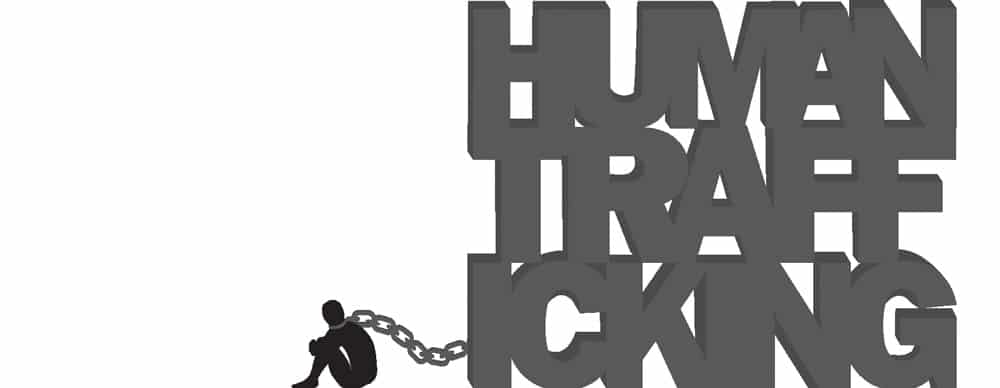By Angela Salter, head of Europe at ACAMS
Now regarded as one of the top three most prevalent financial crimes, the business of human trafficking (HT) is fast reaching epidemic proportions.
According to law enforcement agencies, an estimated £4bn in profits was made by human traffickers across Europe last year. Compounded by the migrant crisis and huge numbers of people wanting to rebuild their lives away from conflict zones in the Middle East and Africa, the scale of financial transactions related to trafficking operations is now almost as large as the illegal drug trade.
And, as the migrant crisis continues to explode, so do the number of traffickers. Based on interviews conducted among different migrants reaching Europe in 2015, over 90% said they had paid a ‘smuggler’ of some description between £3,000 and £6,000 in order to organise their ‘safe passage’.
Europol has compiled a list of over 10,000 suspected individuals believed to be profiteering from the ongoing conflict. These range from those involved with forging identity documentation, to the drivers and other members of organised crime syndicates behind the overall operations.
In addition to people capitalising on the current ‘migrant industry’, prostitution and slavery are the two most common ‘traditional’ outcomes for those trafficked.
Worldwide, an estimated 16.5m people are victims of forced labour, working on farms, in factories or as domestic servants. 4.5m are involved in some form of prostitution and chillingly, 26% of human trafficking cases concern children.
MONEY LAUNDERING
One of the best ways to stop human trafficking taking place is to remove the ability for those involved to launder money used to support their trade or distribute its revenues.
Financial institutions and the compliance professionals working in them – in retail banks, credit unions, money transfer services, fintech companies and pre-paid card service providers – have the capability to help stem the flow of funds.
Their obvious contribution is to identify the financial transactions associated with human trafficking operations, by spotting so-called ‘red flag’ indicators – suspicious employment arrangements, the misuse of bank accounts, credit cards and money services businesses, plus the distribution of payments to smugglers and those organising the crimes.
RED FLAGS
‘Red flag’ indicators of trafficking may be visible around the community, but it is often difficult to specifically identify the crime. For example, you go into a local café or nail bar and always see the same person working, regardless of the time of day.
Or maybe you use a home or office cleaning agency that supplies predominantly migrant workers. Perhaps these workers seem withdrawn and unable to communicate easily – they lack basic language skills and seem uneasy or troubled.
Based on historical experience and victim case studies, it’s quite possible they are victims of traffickers and their employers are processing funds derived from trafficking related activities.
TAKING ACTION
What actions can financial institutions and compliance teams take to address this horrific crime?
Firstly, staff education is essential to ensure suspicious activity is detected and investigated. Of equal importance to other aspects of anti-money laundering (AML) compliance, training programmes need to cover what HT is and where it takes place; the severity of the issue at hand and the fact that it can and does happen close to home.
Underpinning every AML initiative focusing on preventing human trafficking is a Know Your Customer (KYC) programme. Equally important is enhanced transaction monitoring within financial institutions.
In an industry that is currently experiencing a shortage of qualified talent, this may be difficult to achieve.
… an estimated 16.5m people are victims of forced labour, working on farms, in factories or as domestic servants. 4.5m are involved in some form of prostitution and chillingly, 26% of human trafficking cases concern children
Many of the common HT financial indicators are not easily detected automatically and require a high degree of human intervention. For example, monitoring the transfer of funds with no logical relationship between the sender and recipient. Other indicators are frequent or unusual use of night deposit drops, or deposits made through ATM machines.
Alerts can then be set up on a typical transactional monitoring system to trigger a review if the frequency of transactions or total amount deposited within a specified time frame is exceeded. These need to include a reasonable level of granularity.
For example, ATM deposits between 10pm and 6am at different locations could be monitored for patterns occurring. Transaction monitoring should follow a similar framework.
Having in place effective public/private partnerships is important for all anti money laundering activity and preventing the money laundering of revenues associated with human trafficking is no exception.
Information sharing between the public and private sectors is key to spotting anomalies and facilitates the development of intelligence on funding typologies.
Networking and maintaining a regular dialogue between financial institutions and law enforcement agencies are also key requirements to effectively block the flow of funds from human trafficking. Equally necessary are international partnerships to monitor and control cross border activity involving multiple jurisdictions.
Human trafficking operations are active from across Africa, Asia and the Middle East to the Nordic countries, and will involve several payments being made at every stage in the trafficking chain. This is especially the case for migrants who will encounter ‘agents’ requiring bribes for passage throughout their journeys to western Europe.
CHALLENGES
Traffickers are continually adapting and enhancing their operations to avoid being caught, but continual vigilance by financial institutions will help to ensure that their crimes do not remain undetected.
Of all the AML and financial crime prevention activities financial institutions conduct, identifying incidences of human trafficking is perhaps the most challenging and disturbing.
Through training, education and active public/private partnerships to facilitate information sharing among institutions in different jurisdictions, effective monitoring and compliance systems can be developed to help block this most evil of trades.
A panel discussion on ‘Detecting and Combating Human Trafficking with Advanced AML Tools’ will be held at the ACAMS annual AML and Financial Crime European Conference: Compliance Strategies for a Rapidly Changing Regulatory Landscape, May 24th and 25th in London.
Photo (above): Isabel Bo-Linn
COMMON RED FLAG INDICATORS
- Frequent low value money transfers, e.g. below €3,000 from multiple locations in one jurisdiction to a common beneficiary overseas.
- Multiple money transfers at separate branches or banks along a geographical border on the same or consecutive days.
- Unusual cash deposits followed by money transfers to typical migrant countries.
- Pre-signed cheques bearing different handwriting in the signature and payee fields.
- Frequent currency exchanges by customers who are not involved in a high cash industry.
- Extensive use of cash to purchase assets and conduct transactions.
- Company showing incongruously low payroll expenses given their alleged size.
- Cashing of payroll checks where the employer keeps the majority or all of funds.
- Frequent money transfers to countries known for high human trafficking activity.
- Transactions at branch where customer is escorted by a third party ‘ interpreter’ and transferring funds to high risk countries.
- Frequent debits to online escort services and/or websites providing advertising services/classified ads.
- Multiple accounts of foreign workers or students where their employer acts as custodian.
- Business profits and deposits that are significantly greater than peers in their line of business.
- Extensive use of cash to purchase assets and/or conduct transactions.
- Frequent purchases of bulk items not commensurate with business type, e.g. recruitment agency bulk buying food items.
- Number of ‘cleaning’ staff on payroll is unusual for the business type, e.g. construction company with large number of cleaners on payroll.
 About the blogger
About the blogger
Angela Salter joined ACAMS in 2015 to lead the organisation’s development in Europe.
A senior commercial executive with a strong track record in overseas market development, Salter has spearheaded the growth of several international businesses serving the financial services community including roles with Thomas Reuters, Vivendi, Hoppenstedt Bonnier, Moody’s and Financial Times.
Salter is respected as a builder of strong, mutually beneficial business relationships.

